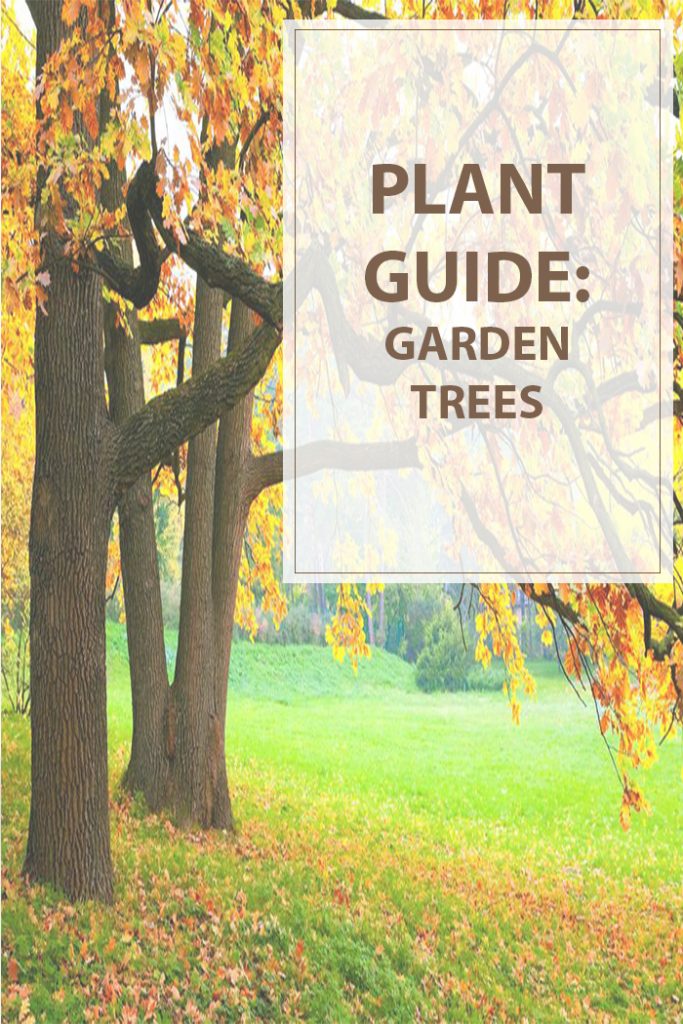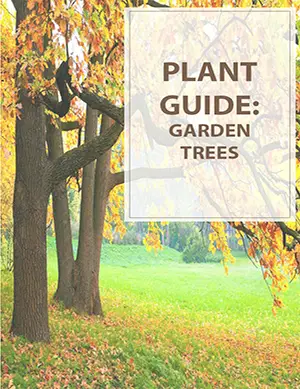Plant Guide Garden Trees
This Plant Guide Garden Trees provides the ideal quick reference guide to selecting and identifying trees for the garden. The plant guide is a helpful introduction to trees and gives advice on choosing a suitable tree for a particular site or purpose, suck as a specimen plant. To chooce or identify your tree, stay tuned for the next articles coming soon where photographs are accompanied by concise plant descriptions. The articles will be grouped by size and season of interest. The trees I will feature are divided according to the average height they attain. However, heights may vary from the ones given, according to site,climate and age. The categories are as follows: Large over 15m (50ft) Medium 10-15m (30-50ft) and Small up to 10m (30ft)
See Also:
- Gardening Tips The 6 Worst Garden Pets
- Things You Should Never Do With Your Lawn Part 1
- Things You Should Never Do With Your Lawn Part 2
- How to Identify and Avoid Poison Ivy
Trees In The Garden
More than any other feature in the garden, trees form the structural framework of a design, with thair distinctive silhouettes providing a foil of constrasting elements against the softer lines of the plantings. Trees offer an enormous diversity of shape and form, as well as colour and texture of foliage, flowers, and bark. They may be grown in may ways, informally in a woodland setting, underplanted with bulbs and shade loving perennials or formally in aveneus or as pleached hedging. Some are so beautiful in bloom that, if sited alone, they make a beautiful, eye catching garden feature. Trees are generally the largests, longest lives and most expensive of plants in the garden, selecting and siting them are primary design decisions. In smaller gardens or in a ‘one tree garden’, careful choice and sitting is vital. Although a tree’s overall appearance and special features are important, it is also essential to consider its suitability for the garden’s soil, climate, and aspect, and to take account of its rate of growth and final height and spread. Garden centres usually carry a limited range of the most popular ornamental trees, but specialist nurseries and mailorder services offer a much wider choice.

Plant Guide Garden Trees Design Elements
Trees are the living equivalent of hard landscaping features, creating a strong visual impact in much the same way as walls and paving. If used structurally, trees can define or enclose space, they can mark boundaries or seperate one part of the garden from another. If used as hedging, they can create effective screens, when used in pairs they can frame a distant view or when in rows, may be used to create an arch. A tree’s form and shape are important to the the style of a garden. Many trees can be used in formal or informal settings, but some, especially those that are coneshaped such as Carpinus betulus ‘Fastigiata’, almost demand formal use. Trees with strong architectular form fit well in small, paved gardens. In contrast, rowans and crab apples are typical ‘English cottage garden’s trees. For gardens with an oriental theme, Japanese maples and Salix babylonica are ideal. While round-headed or spreading trees often have an informal appearance, they cast shade and rain shadow, making underplanting difficult. Trees with an irregular, open branch framework cast little shade, and may be underplanted with bulbs and small perennials.
Plant Guide Garden Trees Successional Interest
In many gardens, the glorious but shortlived flowers of spring and summer leave little to lift the spirits in the dark days of winter. But with planning and careful selection from a palette of flowers, foliage, berries, and bark, colour and interest can be maintained throughout the year. Chooce trees with successive flowering, such as Cercis siliquastrum for spring, Eucryphia for early autumn, and Magnolia and its forms which flower from late winter. The beatiful silvery foliage of Sorbus aria appears in spring, while in autumn the maples give displays of brilliant golds and reds. Autumn highlights are provided by berrying species of Sorbus, Cotoneaster, Crataegus and Malus, some persisting well into winter, which is the best time to appreciate the bark of species of Acer, Betula and Prunus. A specimen tree is grown on its own and so can develop its full natural beauty without competition from other trees. It is important to select a specimen that is in scale with its setting – small trees look lost in wide, open aread and conversely, large trees overhelm confined spaces. In formal gardens, specimen trees are ussually planted in the centre of the lawn. In less formal settings and offset tree adds a dynamic sense of movement to a scheme, and can lead the eye to the view down the garden. Specimens can mark the transition from one area of the garden to another, and providing a foil for a specimen enhances its effect – for example, by planting it in a swathe of gravel, amongst ground cover plants, or by still water where it can be reflected.
Plant Guide Garden Trees Features Of Interest
A tree’s form provides a framework to displays other features of interest at different times of the year. Foliage is the most important, by virtue of its mass and duration. The shape, colour, and texture of leaves provide infinite variation, from the delicate, fern-like foliage of Gleditsia to the Large archtectular leaves of Paulownia. Plants with dark or variegated foliage offer the potentional of subtle or dramatic associations with plain, green leaved species. Surface texture adds another dimensions glossy leaves give glittering reflections and can be constrated with leaves of matt texture. Even the most transient of flowers can create memorable effects, ranging from the delicate profusion of the psring cherries to the tropical opulence of the jacarandas. Trees that bloom in autumn, winter, and early springs are amongst the most valuable, providing interest in the darkest seasons. Choose flower colours to complement the wider scheme, and shelter those with scent so that the still air captures thet fragrance. Fruits, berries, and pods often rival flowers in beauty, and many berrying trees attract wildlife. Do not overlook more subtle fruits, such as the pods of magnolias or the coloured keys maples. The colour and texture of bark can be fully appreciated in winter. Choose from the stark whites of the birches, the mahogany-reds of some Prunus, the striations of the snake bark acers, or the peeling mosaics of Eucalyptus.
See Also: Gardening Tips The 6 Worst Garden Pets
Plant Guide Garden Trees For Screens And Shelter Belts
Large scale tree planting can be used to screen unsightly buildings and roads, whilt also deadening noise and filtering dust. They can provide shelter from wind and frost for other plants nearby. Tree selection is very important. Lombarby poplars are often planted as screens, but their height and narrow outline not only highlight what they are intened to conceal, but also offer little protection from wind at ground level. Stands of mixed deciduous and evergreen trees provide a more effective barrier.
Plant Guide Garden Trees In Containers & Dwarf Conifers
Growing trees in large pots or tubs greatly extends their design potential. On patios, in countryards anywhere where soil space is at premium containerized trees create a verdant and colourful effect, and give height and structure to the design. Trees in large containers may be used to fram an entrance or to flank wide steps, while tender trees may be grown in containers, displayed outdoors in summer, then moved to a light , frost free place as the cold weather draws in. As a group, the dwarf conifers are unique in their diversity of shape and form. They range from globose to spire and cone shape, with habits including prostrate, erect, and weeping. Textures vary from soft and feathery to firm and spiky, and their colours encompass almost metallic shades of gold, silver, bronze and steel blues, as well as rich blue-greens and dark greens. Their compact form is well suited to small, modern gardens, where larger trees are impractical. Adaptable and easy to grow in raised beds and borders, as well as in rock gardens, dwarf conifers are a garden essential. Even the tiniest of them may be used effectively to create miniature landscapes in troughs or other containers. Thanks for reading plant guide garden trees dont forget to share it with your friends.



